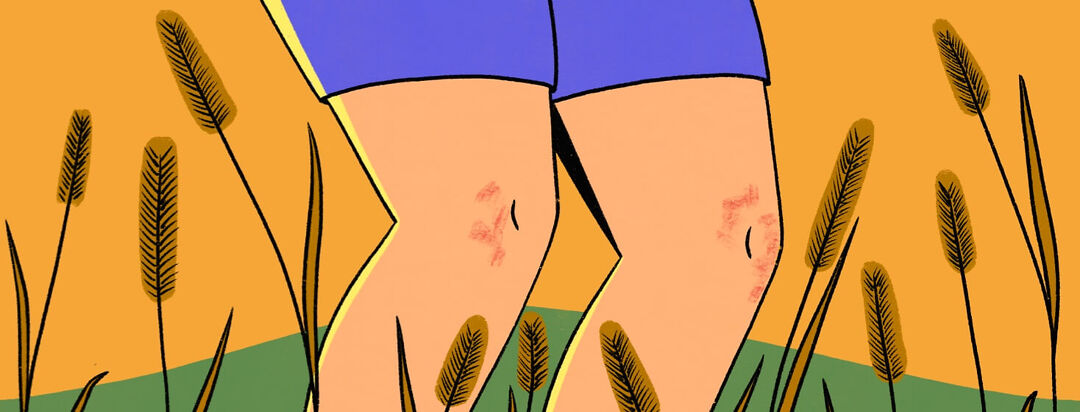Our Season-by-Season Eczema Handbook
A life with atopic dermatitis can feel like an obstacle course. Seemingly mundane and everyday things like our environments, the foods we eat, the products we use, and so much more have to be carefully navigated to avoid a flare-up.
The changing seasons can especially wreak havoc on our skin. The humidity and heat of summer, the allergens of the spring, and the cold and dry months of fall and winter don’t always cooperate with eczema-prone skin. Our Health Leader team shared their essential advice to navigate the complexities of life with eczema through the four seasons.
Featured Forum
View all responses
What can you do in spring?
Atopic dermatitis and allergies tend to go hand-in-hand, which is especially true in the spring. While the world wakes up and flowers bloom, so do triggers and irritants. How have our Health Leaders navigated their allergies and atopic dermatitis in the spring?
- In line with the lightness of springtime, Emma transitions from heavier, occlusive products to lighter, hydrating treatments.
- To protect her skin from increasing sun exposure, Chava wears sunscreen and other sun protection.
- To protect from seasonal allergies, Megan uses bug spray more often than her moisturizer to combat the pollen from new plants. Chava takes a daily antihistamine to proactively prevent flare-ups. Nina keeps an eye on pollen levels and plans her days around them. She’ll also keep her windows closed and eye drops when needed. Peter will also take a daily antihistamine in combination with a nasal spray.
- To manage the aggravation of the wind on her allergies and dry skin, Teresa drinks a cup of nettle leaf tea every day to calm her sinus and skin symptoms.

What can you do in winter?
The cold and dryness of winter can be especially taxing on atopic dermatitis. Whether keeping cozy indoors or bundling up and trekking through the brittle cold outside, it seems triggers are everywhere. How do our Health Leaders manage their eczema in the winter?
- To offset the difficulties and aggression of dry winter eczema, Emma takes more time to apply and reapply her occlusive moisturizers around common flare areas - like her hands, feet, and along her arms and legs. Megan also applies more moisturizers to her hands and feet, but also drinks hot tea. Teresa will use a light layer of an oil-based balm or salve over her body butter or thick face cream to seal in moisture.
- To avoid irritants while keeping warm, Chava takes extra caution to read clothing labels and product labels for throw blankets, slippers, and gloves. Peter will also bundle up in warm clothes with natural fabrics.
- To avoid dryness in her home, Nina uses a humidifier during the winter to combat the dryness of the running heater for her skin and eye symptoms. Similarly, Chava uses a humidifier, cleaning it weekly to avoid mold.
- To combat food triggers during the holiday season, Teresa tries to avoid sugary treats, but once in a while will indulge and accept a seasonal flare-up as a result.

What can you do in the fall?
The cool crisp air of fall is something that a lot of people love. However, it’s transitory nature can be hard on our skin. Finding the best way to manage it can take a lot of trial and error and may be a day-by-day endeavor. How have our Health Leaders managed the eczema-triggering transitions of the fall?
- To reduce the dry scaling she experiences in the fall, Emma taps into her occlusive barrier creams and limits the use of retinoids and other drying treatments she uses on her skin.
- To navigate the chill of fall, Chava keeps gloves in her purse since the slightest exposure to the cold temperatures tends to damage the skin on her hands. She also clears out the leaves in the front of her yard frequently to avoid mold created by the cool temperatures, falling leaves, and rainfall.
- To stay fully hydrated in the fall, Megan uses thicker moisturizers and drinks more water. She’ll also keep her allergy medications on hand. Nina also turns to thicker moisturizers in preparation for the oncoming cold and dryness of winter. Peter turns to his humidifier to avoid drying out the air in his home as soon as he turns the heat on.
- To modify her skincare to the changing seasons, Teresa turns to thicker lotions with a higher oil-to-water content, similar to a body butter or cream.

What can you do in the summer?
Dealing with the effects of sunscreen and sweat, staying hydrated, and avoiding irritants when swimming are just the beginning. Summer is supposed to be fun and easy, but sometimes it can feel like a burden when trying to avoid triggers that surround us. How do our Health Leaders get through their summers?
- To combat the effects excessive sweating (hyperhidrosis) has on her skin, Emma focuses on managing her chafing skin and acne. She uses retinoids to help unclog her pores, exfoliate her skin, and increase her collagen production.1
- To keep cool in the summer heat and avoid facial flares, Chava brings an ice pack with her in a cooler bag to apply to her face when she’s out and about for the day. When she knows she'll be exposed to the sun, she brings her own sun umbrella and tent.
- To avoid too much sun exposure, Megan applies sunscreen to her face and body daily. She also brings protective clothing such as a hat or light sweater in case she needs to cover up. Nina wears light fabrics and eczema-friendly SPF products or heads inside when she's exposed for long stretches of time. Peter turns to a mixture of moisturizer and zinc oxide sunscreen.
- To avoid oozing rashes and stay hydrated, Teresa eats lighter foods like vegetables, salads, berries, and other fruits. She enjoys drinking cool, refreshing drinks like lemonade and peppermint tea. And she avoids eating too much sugar or fried or starchy foods.
What are your seasonal eczema hacks?
It can be tiring and cumbersome to work around factors entirely out of our control to avoid atopic dermatitis flare-ups. But so many of us have found ways to navigate each season’s challenges.

Join the conversation